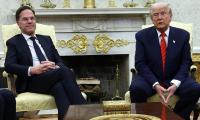The ongoing debate over poverty measurement in Pakistan has been a persistent, often controversial issue. From Food Energy Intake (FEI) estimates to the Multidimensional Poverty Index (MPI), each methodology offers vastly different results, leading to policy confusion and inconsistent poverty alleviation strategies. But perhaps the time has come to rethink how we approach this entire conversation.
The focus on poverty headcounts and thresholds, while essential for understanding deprivation, often traps us in a cycle of reacting to numbers rather than addressing the root causes of economic insecurity. This approach perpetuates an ‘endless poverty story’ where estimates fluctuate but meaningful change remains elusive. It’s time to shift the narrative: instead of constantly adjusting poverty lines, we should focus on expanding economic opportunities for all.
For decades, poverty in Pakistan has been measured using various methodologies, each with its own definition and criteria. The most used approaches include the FEI method, which measures whether individuals can meet their daily caloric needs, and the Cost of Basic Needs (CBN), which factors in non-food essentials like clothing and shelter.
However, these methods yield drastically different results. For instance, the FEI estimates suggest that only 5.4 per cent of Pakistan’s population lives in poverty, while the CBN figures suggest a much higher rate of 21.6 per cent. Additionally, global standards such as the dollar-a-day threshold (currently pegged at $3.65 PPP) push the numbers even higher. The Multidimensional Poverty Index (MPI), which accounts for deprivation across various dimensions like education, health, and living standards, estimates that around 39.5 per cent of Pakistanis are poor.
This wide variation in poverty estimates complicates the policymaking process. With each methodology presenting a different figure, it becomes unclear which data should guide social protection programs and resource allocation. Reliance on inflated figures also risks diverting resources to areas where needs may be overstated while neglecting those where intervention is most urgently required.
One major issue with the constant adjustment of poverty lines is that it masks deeper structural problems. The focus remains on ensuring a population doesn’t fall below an arbitrary income threshold rather than addressing the underlying economic challenges individuals face. As a result, poverty reduction strategies often become reactive, limited to immediate alleviation rather than building long-term economic resilience.
Moreover, headcount-based poverty measures often fail to account for the broader, multidimensional nature of deprivation. While poverty lines provide a useful benchmark, they offer little insight into the complexities of access to education, healthcare, and economic opportunities. They can also be politically manipulated, serving as tools to inflate or deflate numbers to attract international aid or justify government policies.
PIDE, recognizing these issues, organized a major conference bringing together all stakeholders to discuss and debate these complexities, emphasizing the need for a more comprehensive approach.
In the face of these challenges, one must ask: is it still meaningful to constantly adjust poverty thresholds? And more importantly, is this focus on poverty lines diverting our attention from what truly matters: empowering people through opportunities?
To truly address the socioeconomic issues that perpetuate deprivation in Pakistan, the conversation must shift from poverty alleviation to creating and expanding economic opportunities. The term ‘poverty’ often carries a stigmatizing connotation, focusing on deficits rather than potential. By reframing the narrative around ‘economic opportunities’, we encourage a more positive approach – one that prioritizes access to education, employment, financial services, and entrepreneurship.
This shift has several key benefits. First, policies designed around opportunities encourage people to participate in the economy. This means creating jobs, ensuring access to quality education, and facilitating entrepreneurship, particularly for marginalized communities.
Second, focusing on opportunities provides a more comprehensive understanding of well-being. It recognizes that human potential cannot be measured solely by income but by the ability to access resources that enable a good life.
Third, prioritizing economic opportunities over poverty alleviation reduces long-term dependency on social protection programmes. When people are empowered through opportunities, they are less likely to rely on government handouts, thus fostering self-sufficiency and economic growth.
To operationalize this shift, Pakistan can develop an Economic Opportunity Index (EOI), replacing traditional poverty measures with a tool that tracks access to key economic drivers. The EOI could focus on three main dimensions: access to employment, skills and education, and entrepreneurship support. With this index, policymakers would have a more accurate picture of where economic opportunities are lacking. Resources could then be directed to specific regions or communities with low EOI scores, making policies more targeted and future-oriented.
To illustrate how a shift to economic opportunities can uplift the marginalized, consider the example of street vending. Often seen as an informal and unstable sector, street vending provides a vital source of employment for many low-income individuals. By formalizing and supporting this sector, we can turn it into a sustainable avenue for economic growth.
This idea of leveraging street vending as a tool for economic opportunity was notably proposed by Dr Nadeem ul Haque, vice chancellor of PIDE, whose insights have been instrumental in shaping this debate. His emphasis on integrating informal sectors like street vending into the formal economy offers a practical model for economic inclusion.
Policy suggestions for street vending include offering street vendors access to permits and microcredit schemes, allowing them to run legal businesses. Creating designated vending zones with adequate infrastructure like sanitation and security would improve the working environment.
Encouraging digital payment integration would increase financial inclusion and access to formal banking services. Supporting street vending in this way does more than provide income. It empowers individuals to participate in the economy, build entrepreneurial skills, and contribute to local development. This focus on opportunities not only improves livelihoods but also uplifts entire communities by integrating informal workers into the formal economy.
The way forward for Pakistan lies not in constantly recalibrating poverty lines but in creating conditions where individuals can seize economic opportunities. By reframing the narrative and focusing on empowerment, Pakistan can build a more inclusive and sustainable future.
Policymakers need to embrace this shift by developing new metrics, such as the Economic Opportunity Index, and promoting policies that foster skills development, employment, and entrepreneurship. Moving beyond poverty lines and addressing structural issues through opportunity creation will lead to a stronger, more resilient economy – one that works for everyone.
It is time to rethink the poverty debate in Pakistan, and the answer lies in unlocking opportunities rather than measuring deficits. By embracing this new approach, we can move toward a future where economic inclusion and empowerment replace the traditional focus on poverty alleviation.
The debate should no longer be about how many people are poor, but about how many have access to the opportunities that enable them to lead prosperous, fulfilling lives. My deepest acknowledgement goes to Dr Nadeem ul Haque, whose visionary ideas inspired me to conduct this review and to explore the role of economic opportunities in shaping Pakistan’s future.
The writer is associate professor at the Pakistan Institute of
Development Economics (PIDE).He can be reached at: dr.iqbaln@gmail.com
People of that time believed that an eclipse was a symbol of displeasure of gods
Vertically speaking, dominance of domestic debt in Pakistan’s debt portfolio is haunting
Loss of biodiversity is stark reminder that urban mismanagement is not just infrastructural failure but ecological...
Strong public warning systems can also help ensure quick evacuations in places prone to fires
PPPs in Pakistan's WASH sector face significant regulatory and policy challenges that hinder their effectiveness
Instead, it would have powerful chairman with three-year term, appointed at prime minister’s discretion







